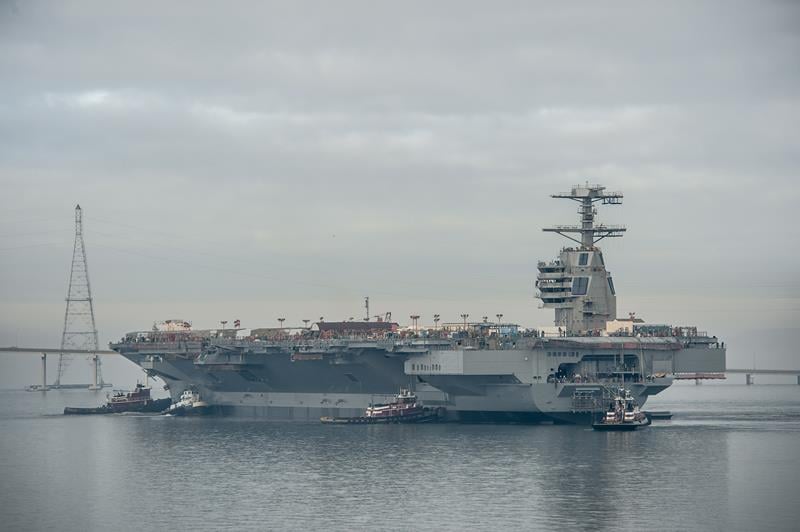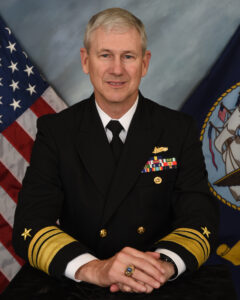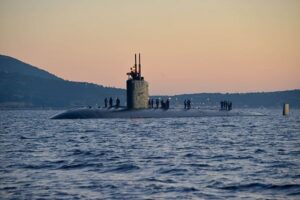Ford Getting Fixed, But No Delivery Date Yet: NAVSEA
Posted on

The carrier USS Ford is afloat but still unfinished.
WASHINGTON NAVY YARD: The USS Ford is getting back on track, said Vice Adm. Thomas Moore, though the head of Naval Sea Systems Command declined to give a new date for the long-delayed supercarrier to be delivered to the fleet. The Ford program is under review by the Pentagon’s procurement chief, Frank Kendall, and has been repeatedly blasted by Senate Armed Services chairman John McCain, a former carrier pilot himself.

Vice Adm. Thomas Moore
“We’re having regular conversations with the Hill and CNO (Chief of Naval Operations Adm. John Richardson) about that, and I expect before the end of the year here, we’ll be able to set a date certain,” the NAVSEA commander told reporters this afternoon. “I can’t give you a date today, because we’ve got two months or so of testing.”
The Ford was originally scheduled for March delivery. That got repeatedly delayed as testing revealed new problems with the ship’s many innovative systems, most dramatically with the Advanced Arresting Gear (AAG) — crucial to let planes land on the deck — and the Main Turbine Generators (MTGs) — crucial to powering the ship.
“The problem with the MTGs is isolated to the MTGs, and we’re just about done (with) the root cause analysis and putting some fixes in place,” Moore said, “and I expect us to be back into testing the MTGs on Ford here in the next couple weeks.”
“The rest of the test program on the ship is continuing,” Moore continued. “EMALS Electromagnetic Aircraft Launch System) is done, AAG (the landing system) is about 56 percent done with the test program on the ship.” Additional testing is underway at an AAG set up on land, which has progressed to landing actual aircraft.
“We will have an aircraft recovery bulletin (i.e. landing instructions) for Super Hornet by February,” Moore said. “When that ship delivers we will be ready to land aircraft on the AAG.”
Testing remains to be done on two more new systems, the power-hungry Dual-Band Radar and the Advanced Weapons Elevators. (Ford‘s prime problem has been trying to pack too many unproven bright ideas into a single ship). Other than that, Moore said, “the rest of the ship is essentially complete.”
Ford is just the highest-profile problem for Moore, who ran the carrier program until he took over NAVSEA in June. The Navy is also struggling with delays in maintenance overhauls for its existing carriers, most painfully the USS George H.W. Bush, whose planned six-month “maintenance availability” actually dragged on for 13 months — a staggering 115 percent too long — and jeopardized the Bush‘s scheduled deployment to the Persian Gulf just as Iran appears set to challenge the next administration.
“We’ve had capacity issues at the naval shipyards,” said Moore, and NAVSEA had to pay to send more work to commercial yards, including nuclear submarine work they’ve not previously done. Moore has tried to improve planning so that yards decide they need more time at the start of a maintenance availability period, rather than only realizing halfway through. In some cases the new honesty has extended to simply saying, “sorry, we can’t right now.”

USS Boise
“We did not induct the Boise this summer,” Moore said, speaking of an aging nuclear-powered attack submarine launched in 1991. “The Boise availability was going to take 47 months, for an availability that should have taken about 22.” Past practice would have been to bring the Boise into the shipyard anyway and have her sit there with a skeleton crew, with the yard doing work in dribs and drabs. Instead, NAVSEA decided to delay the start of Boise‘s maintenance until the yard could focus on her.
Even as it struggles with traditional shipyard work, NAVSEA is trying to get its arms around cybersecurity upgrades. The long-established cycle of bringing ships in for overhaul every few years simply isn’t fast enough for a field where computing power doubles every 18 months and “zero day” threats pop up overnight. NAVSEA is working to upgrade ships’ software, if necessary, every time they pull in to port, Moore said, but the bureaucracy that contracts for upgrades can’t keep up.
“We’re working as quickly as we can to get change proposals out, but the (process) that we use to design a new system, flesh it out, cost it out, get it in the budget, sometimes is not compatible with the pace that the threat is changing,” Moore said. “We’re not moving fast enough.”
Subscribe to our newsletter
Promotions, new products and sales. Directly to your inbox.
